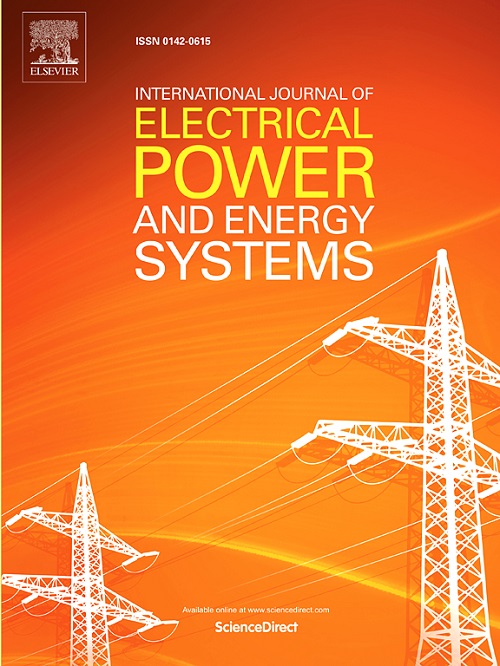Real-time multi-label event categorization in the Brazilian interconnected power system
IF 5
2区 工程技术
Q1 ENGINEERING, ELECTRICAL & ELECTRONIC
International Journal of Electrical Power & Energy Systems
Pub Date : 2025-09-06
DOI:10.1016/j.ijepes.2025.111036
引用次数: 0
Abstract
The increasing complexity of power systems, driven by the decentralization of generation and the growing demand for operational reliability, has reinforced the importance of Wide-Area Monitoring Systems (WAMS) for dynamic system analysis. Among WAMS applications, event detection and classification are essential for enabling timely and accurate responses to disturbances. However, event classification methodologies face significant challenges, such as the occurrence of multiple and sequential events, disturbance overlap, and a high degree of similarity among different classes. This work proposes a multi-label classification methodology based on Convolutional Neural Networks (CNNs), applied to events detected using a two-level robust approach consisting of the Discrete Wavelet Transform-based spectral analysis, followed by a deep neural network (DNN) strategy that prevents false alarms. The main contributions include: (i) the construction of a multi-label dataset comprising 11,205 real events from the Brazilian Interconnected Power System (BIPS), covering Line Tripping (LnT), Electromechanical Oscillations (EO), Loss of Load (LoL) and Generation Tripping (GT); (ii) the development of a classification model based solely on real synchrophasor data; and (iii) its experimental validation during six months of online operation in the BIPS, including common challenges associated with Phasor Measurement Unit (PMU) data, such as noise, missing data, and synchronization errors. The model achieved a Hamming loss of 0.082, correctly classifying 91.8% of the events during deployment. These results demonstrate the effectiveness and robustness of the proposed approach in operational contexts, contributing to faster and more reliable decision-making in power system control centers.
巴西互联电力系统中的实时多标签事件分类
由于发电分散化和对运行可靠性的需求日益增长,电力系统的复杂性日益增加,这就加强了广域监测系统(WAMS)对动态系统分析的重要性。在WAMS应用中,事件检测和分类对于能够及时准确地响应干扰至关重要。然而,事件分类方法面临着重大挑战,例如多个连续事件的发生,干扰重叠以及不同类别之间的高度相似性。这项工作提出了一种基于卷积神经网络(cnn)的多标签分类方法,应用于使用两级鲁棒方法检测的事件,该方法由基于离散小波变换的频谱分析组成,然后是防止假警报的深度神经网络(DNN)策略。主要贡献包括:(i)构建了一个多标签数据集,包括来自巴西互联电力系统(BIPS)的11,205个真实事件,涵盖线路跳闸(LnT),机电振荡(EO),负载损失(LoL)和发电跳闸(GT);(ii)开发完全基于真实同步相量数据的分类模型;(iii)其在BIPS中在线运行六个月期间的实验验证,包括与相量测量单元(PMU)数据相关的常见挑战,如噪声、数据缺失和同步错误。该模型的汉明损失为0.082,在部署期间正确分类了91.8%的事件。这些结果证明了该方法在运行环境中的有效性和鲁棒性,有助于电力系统控制中心更快、更可靠地做出决策。
本文章由计算机程序翻译,如有差异,请以英文原文为准。
求助全文
约1分钟内获得全文
求助全文
来源期刊
CiteScore
12.10
自引率
17.30%
发文量
1022
审稿时长
51 days
期刊介绍:
The journal covers theoretical developments in electrical power and energy systems and their applications. The coverage embraces: generation and network planning; reliability; long and short term operation; expert systems; neural networks; object oriented systems; system control centres; database and information systems; stock and parameter estimation; system security and adequacy; network theory, modelling and computation; small and large system dynamics; dynamic model identification; on-line control including load and switching control; protection; distribution systems; energy economics; impact of non-conventional systems; and man-machine interfaces.
As well as original research papers, the journal publishes short contributions, book reviews and conference reports. All papers are peer-reviewed by at least two referees.

 求助内容:
求助内容: 应助结果提醒方式:
应助结果提醒方式:


